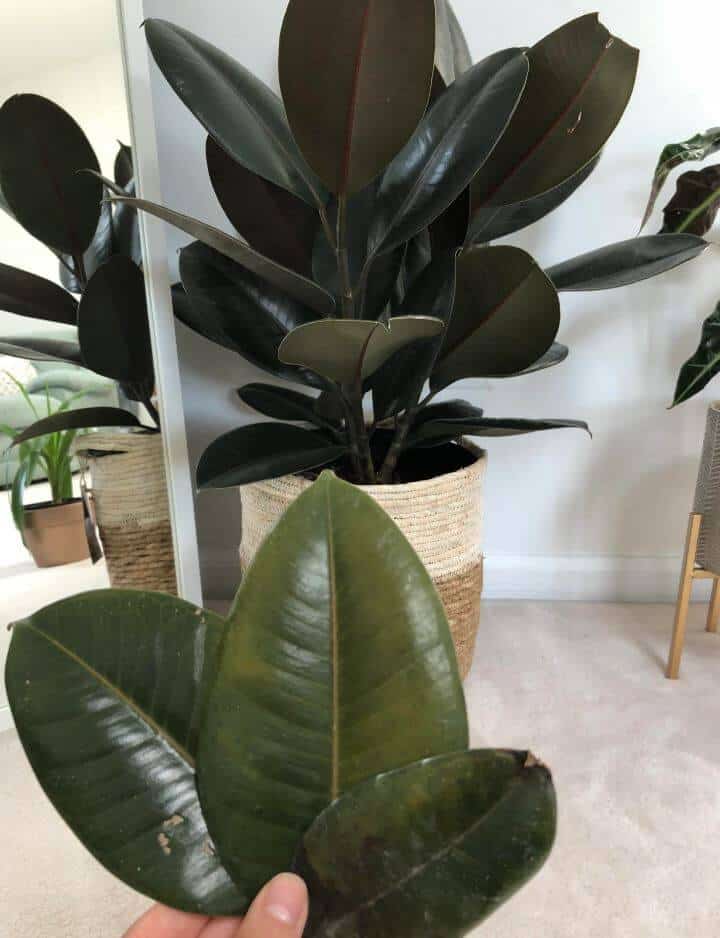Last Updated on May 4, 2023 by a Friendly Gardener
Rubber plants boast glorious glossy foliage and are incredibly popular for this reason. These are resilient plants known to enjoy a long lifespan. So, naturally, if your rubber plant starts dropping leaves, it’s a cause for concern. Despite their hardy nature, if they experience improper care for a prolonged period, these plants will suffer and begin to show it.
Crispy wilting foliage or mushy yellowing foliage generally indicate watering issues, while curling leaves may indicate a pest problem, a light issue, or even environmental temperature problems. Any of these issues can cause a rubber plant to lose its leaves. Careful examination of your plant should indicate where the true problem lies.
Why Is My Rubber Plant Losing Leaves?
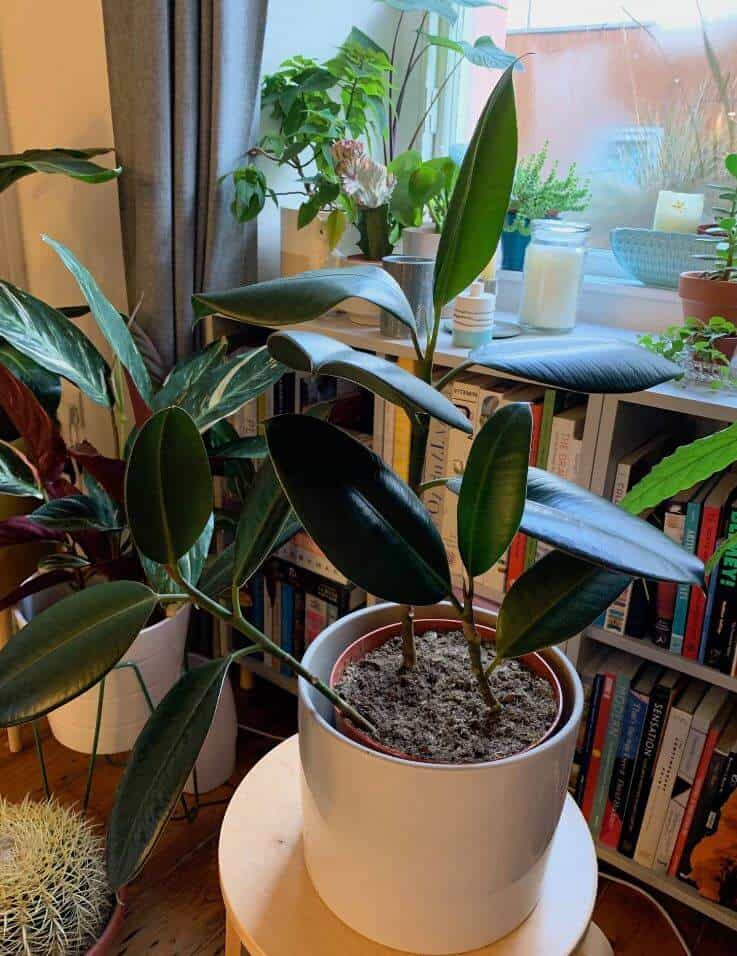
Light Exposure Problems
There are several reasons why what appears to be a healthy rubber plant may begin to lose its foliage. One of the most common reasons is some type of change in environmental light. It’s quite common to see a rubber plant begin to drop its leaves if it has been outside for a while and then is transferred indoors.
Rubber plants belong to the Ficus family. Ficus species are known to thrive with generous amounts of bright light. So, if your rubber plant has been in a bright sunny spot, either outside or indoors, and is suddenly moved to a location with less light exposure, expect it to react. One common reaction is rubber plant leaves falling. Light exposure should be indirect as harsh direct sunlight can cause leaves to droop.
What to Do
If you must change your rubber plant’s location, do so gradually. Do not abruptly bring a rubber plant that has been outdoors or in a particularly bright indoor spot to a shady or dark spot. Acclimatize your plant slowly, perhaps moving it to its new position for a short period daily and then gradually increasing the time the plant is left in its new spot. This should aid in preventing leaf drop if a change in light exposure is the problem. Avoid placing your plant directly in a window, opt for near a window or light source.
Watering Issues
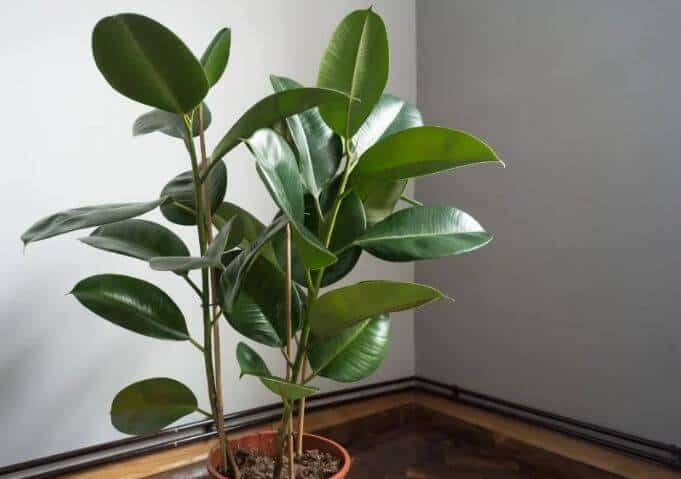
Another very common reason for a rubber plant to drop its foliage is an issue with watering. Overwatering places these plants more at risk for leaf drop than underwatering. Most of us may assume that a leaf drop indicates a plant is thirsty and thus increase watering. The rubber plant is slightly drought resistant, so watering this plant only when necessary is essential to the plant’s overall health. Nonetheless, underwatering can also be a problem if you forget to give your plant a drink.
What to Do
When watering a rubber plant, it’s best not to stick to a rigid schedule. The best means for preventing overwatering is to allow these plants to dry out slightly before watering anew. Roots need to remain relatively dry. When you feel it’s time to water, poke your finger into the plant’s soil bed. If the soil feels dry to the touch at least an inch deep, then proceed with watering.
Your plant needs a pot with adequate drainage holes. When watering, do so deeply and wait for all excess water to drain from container holes before returning the plant to its spot. You may also opt to cultivate your rubber plant in a clay or terracotta pot as these will aid in wicking away excess moisture through evaporation.
Low Humidity Levels
Rubber plants prefer higher humidity levels. A humidity issue may be more frequent during winter months because leaves tend to dry out due to heating, especially if your plant is in the vicinity of a heating unit, vent, or radiator. It is also not recommended that these plants are located in rooms equipped with dehumidifiers.
What to Do
If your home has dry air due to air conditioning or heating, acquiring a small space humidifier for the room or area where your plant is located may solve the problem. Keep your plant away from vents, radiators, or air conditioning and heating units in general.
Environmental Temperature
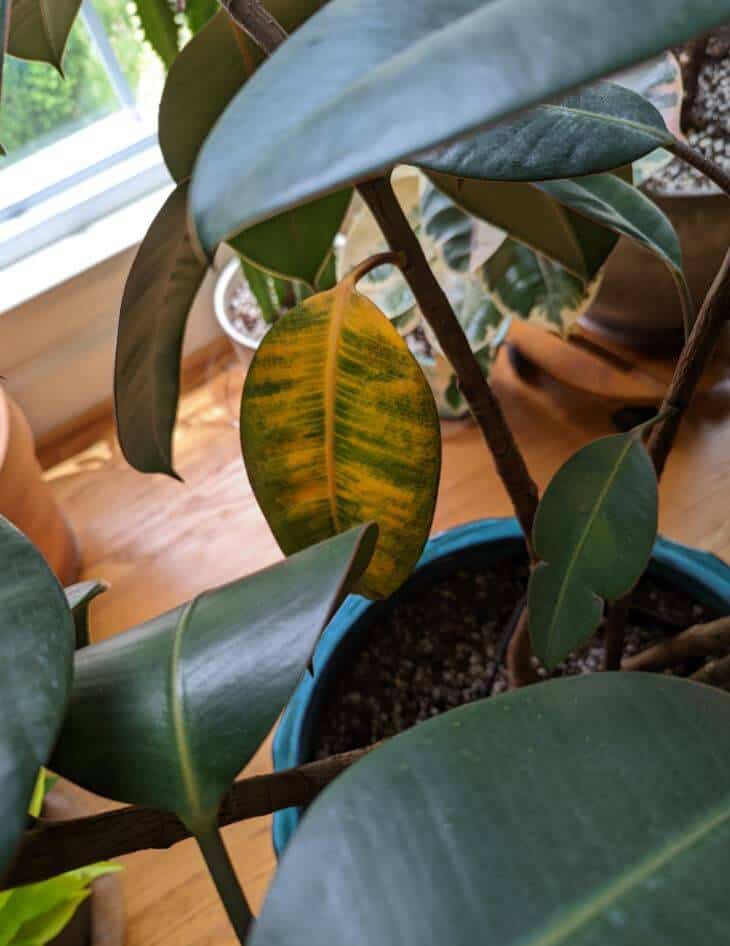
Naturally, a tropical plant, rubber plants like temperate climatic conditions to thrive making them ideal for indoor cultivation. They can be cultivated outside in a temperate climate. If you are raising your rubber plant outside, it should be moved indoors before the temperature drops below 50°F. It will, however, need some time to acclimate to its new location. Curling leaves that begin to drop generally indicate an acclimatization issue.
What to Do
When moving a rubber plant indoors from outdoor cultivation, do so gradually perhaps allowing it to remain outside during the day, weather permitting. Slowly reduce the length of time the plant is left outside until it becomes acclimated. Ideal temperatures for rubber plant cultivation measure between 65° and 80° F.
Pest Infestations

Occasionally a pest infestation may be to blame for a rubber plant dropping leaves. Scale insects particularly like rubber plants, so if the lighting has not changed and you feel your watering schedule is correct, examine your plant for insects. Scale insects appear to be dark waxy deposits situated on leaves or stems.
Other pests to examine your plant for include aphids, spider mites, and thrips. If you keep your plant outdoors, they are more at risk for pest infestation. Rubber plants can be treated with insecticidal soap if you suspect pests. Repeat treatments until all pests are eradicated.
What to Do
Scale insects can be removed manually even by scraping them off with a fingernail. Still, plan on treating your plant with an organic pesticide to remove pests. Use a light spray of neem oil or apply this horticultural oil to a cotton ball and apply it directly onto your plant. Neem oil is not toxic to humans, family pets, or plants themselves.
In Conclusion
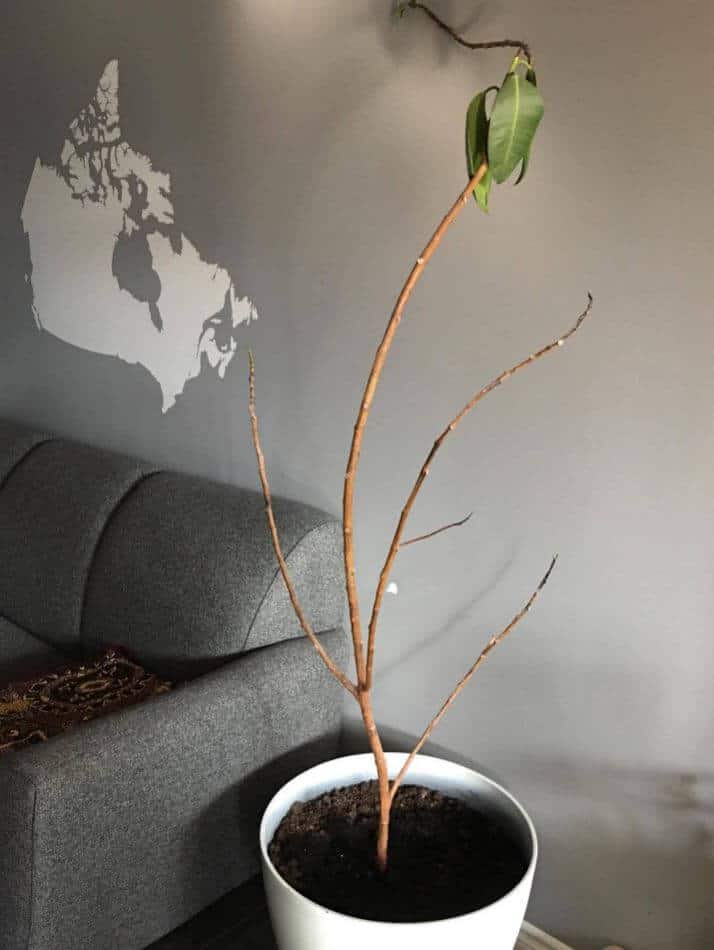
Rubber plants are hardy and resilient. Once adjustments have been made to improper environmental conditions, you should see your plant rebound quite quickly and flourish. Damaged leaves will not recover and will drop, so it’s best to prune above leaf nodes to encourage new growth.

